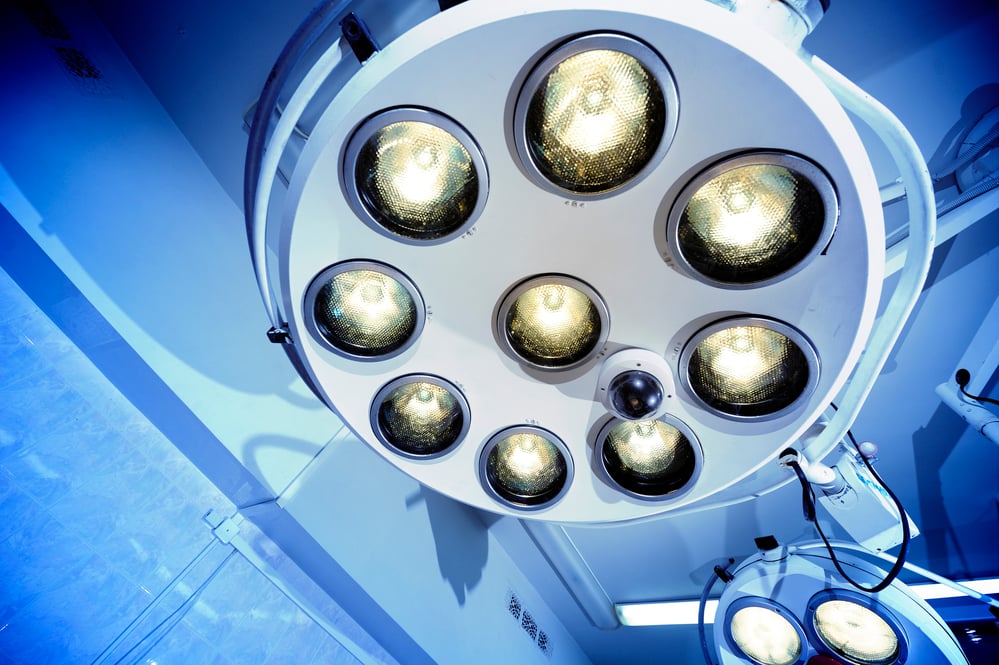
Surgical intervention to reduce or eliminate migraine is available for eligible candidates. Each of the procedures described in this post treats a particular nerve issue identified by prior treatment and test results.
Some procedures release a nerve that is entrapped or irritated by surrounding tissue, while other procedures primarily provide pain blocking. Which type works for you depends on the cause of your migraines and your specific anatomy and reaction to medications.
Migraine Surgery Overview
Surgery becomes an option when less-invasive procedures and treatments prove ineffective. The goal of surgery is to reduce migraine frequency, severity, and duration. It is not to eliminate migraines entirely because that outcome cannot be guaranteed.
Surgical intervention is associated with physical problems such as the compression and/or irritation of key nerves in the face and head. Surgery may relieve pressure caused by anatomic issues specific to a patient at any time of life, including those that evolve as the patient ages.
Migraine surgery developed when certain plastic surgery procedures for eyebrow lifts and other facial improvements resulted in the patient reporting a reduction or elimination of migraines previously suffered. Also, some patients who underwent sinus surgery reported improvement in their chronic migraines.
Plastic surgeon Bahman Guyuron, MD, postulated that migraines are caused by inflamed trigeminal nerve branches in the head and neck. The plastic or sinus surgery alleviated irritation somehow and led the way to reduced or eliminated migraines.
Migraine surgery is performed as an outpatient procedure, most typically under a general anesthetic, but sometimes performed under local anesthetic. Most procedures take less than two hours, depending on the number of migraine trigger sites treated.
This is not brain surgery. The physician does not remove or invade the bones of the skull. The type of surgery is determined by the trigger nerves and tissue believed to be involved in causing the migraines.
Types of Surgery
Surgery can release a pinched or entrapped nerve, or it can block pain.
In the first, muscle, fat, or other structures impinge on or compress the nerve, keeping it from working correctly. Several different nerves can trigger migraines and must be identified before surgery begins.
Pain blocks work by overriding pain signals to the brain.
The two most common procedures are M.I.S.O.N. and M.I.G.O.N.E.
M.I.S.O.N.
Overview
M.I.S.O.N. or Minimally invasive supra-orbital nerve compression is endoscopic surgery through tiny incisions in the scalp and around the eyebrows. Nerve decompression relieves the pressure of a pinched or entrapped supra-orbital nerve branch of the optic nerve that provides sensation to the scalp.
Procedure
The surgeon injects a nerve block paired with a steroid into the nerve. The nerve block serves to reduce or relieve pain from certain types of migraines, and the relief may last weeks or months.
It's performed during an office visit with almost no downtime.
Candidacy
To be a good candidate for this procedure, the patient must be diagnosed with chronic migraine by a neurologist. The patient may undergo pre-surgical testing with Botox(R) injections to pinpoint the trigger nerves responsible for the migraines.
The doctor and patient must consider any side effects as well as the severity, duration, and frequency of the migraine attacks. The physician will consider surgery only if other treatment options have been ineffective.
M.I.G.O.N.E.
Overview
Minimally invasive greater occipital nerve entrapment surgery treats the occipital neuralgia and migraines triggered by the occipital nerve. The root cause of the resulting migraine is the entrapment of the nerve within the surrounding muscle tissue. When the muscles or other tissues, such as the fascia, tighten, the nerve is kept from functioning normally.
The surgeon removes a little muscle and other tissue to free the nerve for normal activity.
Procedure
Multiple trigger points can be addressed in a single procedure, which can last two to three hours. The surgery is performed on an outpatient basis and is guided by previous results of Botox injections. It is also minimally invasive, as the name attests.
Candidacy
A patient must have undergone initial medication treatment that proves ineffective or that lose effectiveness over time. Alternatively, the medication's side effects may outweigh its benefits and cause the patient to discontinue treatment.
Other Procedures
Septoplasty
Septoplasty is the surgical correction of a deviated septum. The deviation or bend in the nasal septum puts pressure on the nerves that run through it. Straightening the cartilage can ease or eliminate the pain and pressure.
Neurostimulators
Neurostimulators are tiny electrodes implanted surgically under the skin around the trigger nerve. The electrical current gently stimulates the nerve and keeps it occupied, preventing harsher pain signals from getting through to the brain.
Nerve Blocks
A nerve block is similar to the M.I.S.O.N. procedure. It is not necessarily permanent. A nerve block is the injection of a local anesthetic and steroid directly into the trigger nerve. The injection is painful enough that it is performed under anesthesia.
Is Surgery Right for You?
The question of whether to pursue surgical intervention depends on:
- Your medical history
- The results of a consultation with the surgeon who performs the procedure
- Test results from other healthcare providers
- Information from your migraine diary
Other factors may come into play, too.
First, the candidate must be diagnosed with migraine by a neurologist. Not all headaches are migraines. The candidate must also have identifiable sites of nerve compression of which the surgeon is confident.
A consultation discusses the efficacy or failure of medication, the expected effectiveness of surgery, and the severity of migraines. If the patient responds well to Botox, it's a good sign.
The surgeon reviews test results such as M.R.I., M.R.A., and C.T. scans, including the attending radiology reports. The patient fills in a medical questionnaire that asks about family history, triggers, and other information. The neurologist or primary care physician can include any further information.
The outcomes of previous treatment by nerve blocks or Botox are included.
The physician should ask any patient presenting with migraine to keep a migraine diary to track when an attack occurs, how long it lasts, and how severe the pain is. It also notes any potential triggers for the migraine. The details can tell the surgeon how beneficial surgery may be.
Other factors that impact whether surgery is an option include:
- The patient's feelings about the side effects or complication risks of the procedure.
- How well the incisions are hidden beneath the hairline or in the upper eyelid.
- A discussion of complications such as wound healing problems, bleeding, nerve injuries, and the failure of the surgery to correct the problem.
- The length and difficulty of the recovery include slight bruising or swelling that resolves in two weeks, the time it takes to return to normal activities, and whether the patient must refrain from strenuous exercise.
Conclusion
Results are never guaranteed for migraine or any other surgery, but 90% of Migraine Relief Center patients report a reduction in their migraines' frequency and duration. Half of the patients report staying migraine free within months of surgery.
Results may vary for individual patients. You should check with your insurance provider to see if the procedure is covered before deciding.
Contact the Migraine Relief Center to learn more.



